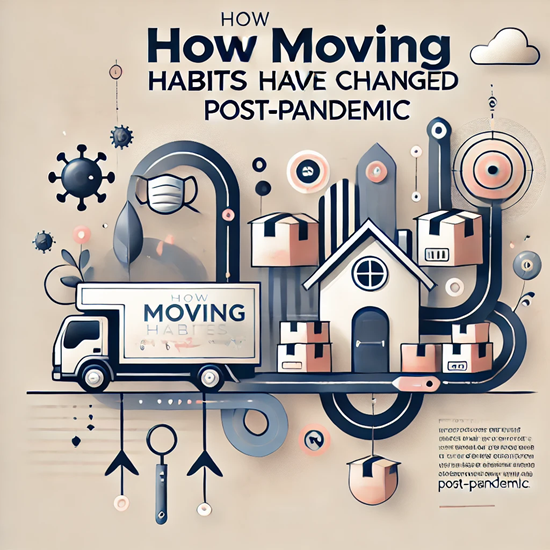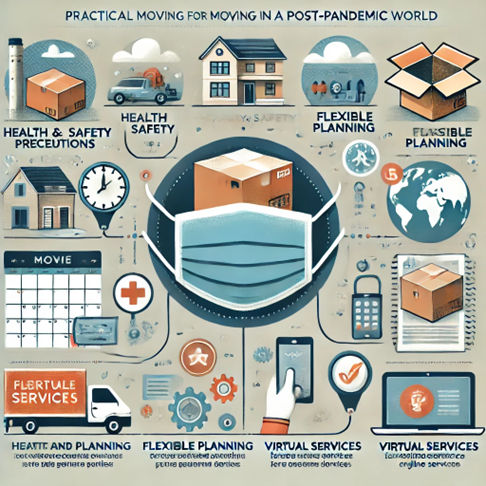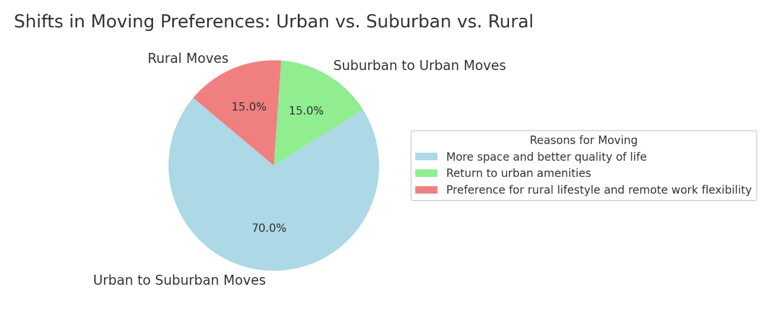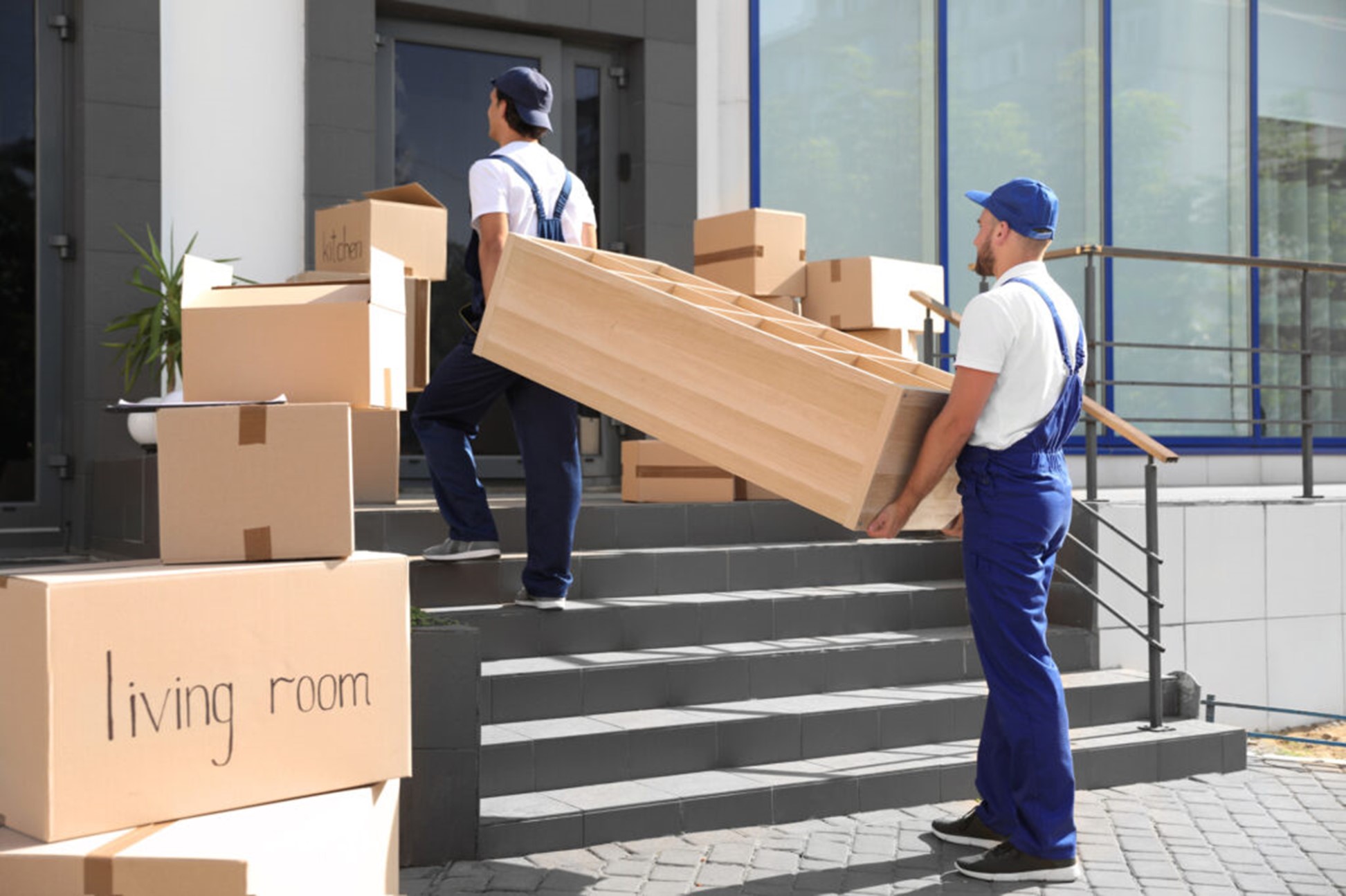
Published on 08/06/2024
Published on 08/06/2024
The COVID-19 pandemic has profoundly impacted various aspects of daily life, including how people choose to move and where they decide to live. As the world adapts to new norms, the moving industry has seen significant changes in moving habits and patterns. In this article, we explore how these habits have evolved post-pandemic, supported by data, expert insights, practical tips, and compelling stories.
The pandemic has led to noticeable shifts in moving patterns. Key data points include:

The bar chart above illustrates the significant changes in moving habits observed since the pandemic. Notably, there has been a 35% increase in local moves as remote work has enabled more people to relocate within their regions. Seasonal shifts in moving patterns have also been observed, with a 15% increase in off-peak season moves. Additionally, a 25% rise in moves to popular destinations, such as suburban and rural areas, reflects changing preferences for more space and lifestyle improvements. Surely, the most substantial change, a 45% impact, is attributed to remote work opportunities influencing relocation decisions.
This is what experts say about post-pandemic changes:
Jonathan Woetzel, Director at McKinsey & Company, explains, “The demand for larger homes in suburban areas has significantly increased as people prioritize more space for remote work and living. This shift reflects a broader trend where individuals are seeking environments that offer a mix of residential, retail, and recreational spaces” (McKinsey & Company).
John A. Mondragon, Economist at the National Bureau of Economic Research, adds, “The transition to remote work has been a key driver of the housing market’s recent growth. Areas with a higher share of remote workers saw a substantial increase in housing demand and prices during the pandemic, highlighting the long-term impact of remote work on residential markets” (NBER).
These insights highlight the growing importance of flexibility and adaptability in the moving industry. Furthermore, as remote work continues to influence housing preferences, moving companies are increasingly offering services tailored to accommodate these new needs, such as virtual consultations and flexible scheduling options.

Navigating a move in these uncertain times requires careful planning. Here are some essential tips to help ensure a smooth and safe moving experience:
Ensure your moving company follows comprehensive COVID-19 safety protocols. This includes sanitizing vehicles and equipment, using protective gear like masks and gloves, and maintaining social distancing measures. Hence, don’t hesitate to ask your movers about their health and safety practices.
With the possibility of unexpected changes, it’s crucial to work with a moving company that offers flexible scheduling and cancellation policies. So, this flexibility allows you to adjust your plans as needed, whether due to health concerns or other unforeseen circumstances.
Take advantage of virtual moving services to minimize in-person interactions. Many moving companies now offer online estimates, virtual home tours, and digital contract signing. Overall, these services not only enhance safety but also streamline the planning process, making it more convenient for you.
During the COVID-19 pandemic, many families moved away from crowded urban centers to seek more space and a safer environment. For instance, families like the Johnsons moved to quieter suburban areas, prioritizing larger homes that could accommodate both remote work and family life. Specifically, this trend has been widely reported, with the U.S. Census Bureau noting a significant increase in moves to exurban communities. In fact ,this shift was driven by a combination of remote work opportunities and the desire for a more spacious and comfortable living environment, far from the dense urban landscapes that were more affected by the pandemic (Census.gov) (Pew Research Center).
Similarly, many small businesses have found new opportunities by relocating to less densely populated areas. The World Economic Forum reported that numerous businesses adapted to the changing market by moving to locations where they could better serve a growing local clientele. This includes small enterprises like local bakeries that, by moving to smaller towns, have tapped into a burgeoning demand for locally produced goods. The increased focus on community and local shopping has allowed these businesses to thrive even amidst the challenges posed by the pandemic (World Economic Forum).
These real-life examples highlight significant shifts in living and working patterns as people and businesses adapt to new realities. In fact, the stories illustrate broader trends such as the increased preference for suburban living and the growing importance of local businesses in community economies. These changes are not only reflective of immediate responses to the pandemic but may also signify longer-term shifts in societal behavior and preferences.
Visual representations can effectively summarize complex data. The infographic below illustrates the shifts in moving preferences among urban, suburban, and rural areas, along with the reasons behind these moves.

Here’s the pie chart illustrating the shifts in moving preferences, showing the percentage of moves from urban to suburban, suburban to urban, and to rural areas. Also, it includes reasons for these moves, such as the desire for more space and a better quality of life, the return to urban amenities, and the preference for a rural lifestyle and remote work flexibility.
Looking ahead, several trends are expected to shape the moving industry:
The adoption of remote work by many companies is likely to continue, allowing employees greater flexibility in choosing their living locations. This trend is expected to sustain the movement towards suburban and rural areas, as people prioritize lifestyle choices over proximity to their workplaces.
The pandemic has heightened awareness of health and safety, and this concern is expected to persist. Moving companies will continue to prioritize health and safety protocols, such as sanitizing equipment, offering contactless services, and adhering to local health guidelines. Therefore, these measures will remain crucial in ensuring customer trust and satisfaction.
The moving industry is poised for significant technological advancements. Innovations such as AI-driven customer service, virtual reality for home tours, and automated packing solutions are becoming increasingly prevalent. Thus, these technologies not only enhance efficiency but also offer a more personalized and convenient experience for customers.
These changes indicate a shift towards a more flexible and customer-centric moving experience. As the industry adapts to these evolving demands, moving companies that embrace these trends will likely thrive, offering innovative solutions that cater to the diverse needs of their clients.
The COVID-19 pandemic has undoubtedly transformed moving habits, prompting a noticeable shift towards local moves, suburban living, and the flexibility afforded by remote work. Furthermore, as the industry continues to adapt, it is essential for both moving companies and customers to stay informed and prepared for these evolving trends. By understanding and embracing these changes, the moving industry not only navigates the challenges of a post-pandemic world but also seizes new opportunities for growth and innovation. The future promises a more flexible, customer-centric, and technologically advanced moving experience, setting the stage for continued success in the industry.
 Top 10 Challenges During a Move and How to Overcome Them
Top 10 Challenges During a Move and How to Overcome Them
Discover top moving challenges and learn practical tips to overcome moving obstacles. Moving tips and solutions for a stress-free move.
Read more The State of the Moving Industry: Trends and Predictions for 2024
The State of the Moving Industry: Trends and Predictions for 2024
Stay ahead of the curve in the moving industry, find out about the latest trends, emerging technologies, and predictions for moving in 2024.
Read more Steps to Take Before Moving in Retirement
Steps to Take Before Moving in Retirement
Expert Tips On How to Prepare For a Stress-Free Retirement Move
Read more